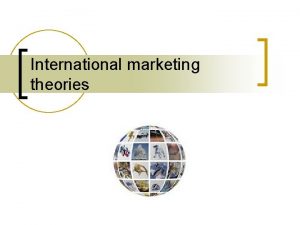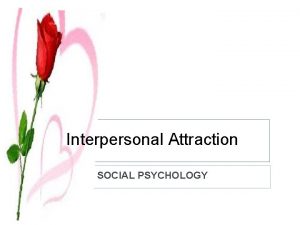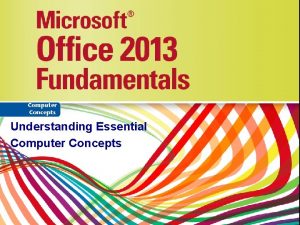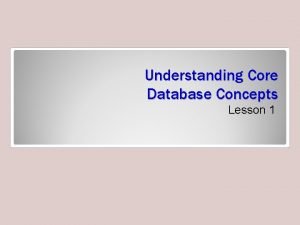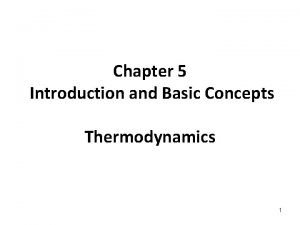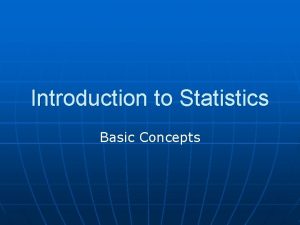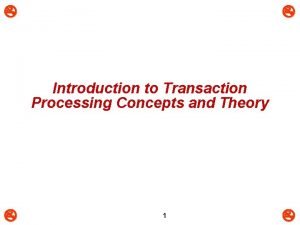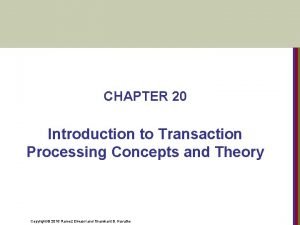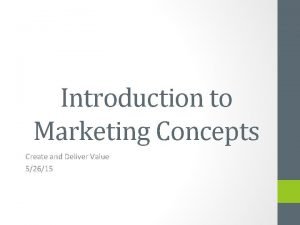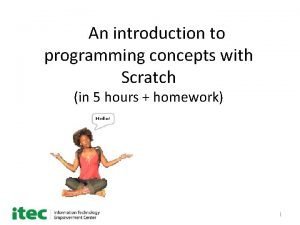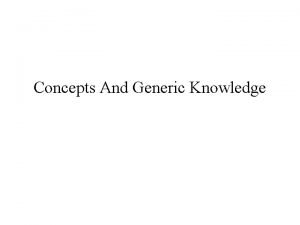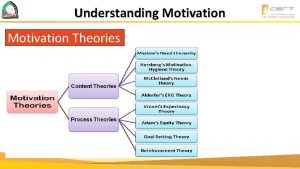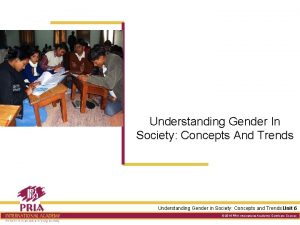INTRODUCTION TO THEORIES CONCEPTS UNDERSTANDING AND USING THEORIES












- Slides: 12

INTRODUCTION TO THEORIES & CONCEPTS UNDERSTANDING AND USING THEORIES & CONCEPTS

WHAT IS A CONCEPT? “An abstraction or general notion that may serve as a unit of a theory” (Oxford Companion to the Mind). A concept is an idea that is explained by looking at all of its characteristics and features. A short hand for an otherwise lengthy description of something.

EXAMPLES • “Something often made of wood that usually has four legs and a big board on top” • = Table • The King has the ability to make all citizens do things they would otherwise not do. = The King has power over the citizenry.

MULTIPLE DEFINITIONS • Scholars debate about the exact definition about many of the concepts you will encounter. • Remember that in politics (and the social sciences in general), there are multiple definitions for the same term - these are concepts.

FREEDOM • How do you conceptualise “freedom? ” • What are the similarities and differences of your definition with your neighbour?

USING CONCEPTS • It is good practice to clarify/define concepts in your writing that could be ambiguously received. • For example: • • “freedom here is defined as…” • • “According to Locke, legitimacy refers to…. ” • Referencing gives validity to the definition you have given.

IDENTIFYING CONCEPTS To identify key concepts when reading, keep in mind: • • What is the topic for this week in the course outline? What are the recurring themes in the text? What key words does the author use repetitively? What is the authors argument? What role do the concepts you have identified play in achieving this?

WHAT IS A THEORY? • “A theory is an account of the world which goes beyond what we can see and measure. It embraces a set of interrelated definitions and relationships that organizes our concepts of and understanding of the empirical world in a systematic way. ” (A Dictionary of Sociology) • Concepts are building blocks of theories.

FOUR MAJOR ROLES Theories fulfil four major roles in the social sciences: 1. They make generalisations about and classifications of the world. 2. They build hypotheses which are then tested through empirical research. 3. They aim to explain phenomena and identify/propose potential causal mechanisms and other interactions between phenomena. 4. They enable us to draw connections at an abstract level which might not be at first sight observable in the real world and thus guide research in new directions.

USING THEORIES Theories are analytical tools that simplify the “reality” of a case in order to make it analysable. Thus, different theoretical lenses simplify cases in different ways, and thus can shed light on different aspects of a conflict, as they ask questions differently. We do not refer to theories as being wrong or right: just more or less useful in understanding a particular subject/phenomenon.

THEORIES CHANGE • As theories are used to simplify and explain reality, they must change as our reality changes. • Prevalent theories that shape the academic agenda are also referred to as paradigms; which shift over time. • Theories evolve over time and with critique.

This presentation is licenced under the Creative Commons Attribution 2. 5 South Africa License. To view a copy of this licence, visit http: //creativecommons. org/licenses/by-sa/2. 5/za/ Or send a letter to Creative Commons, 171 Second Street, Suite 300, San Francisco, California 94105, USA.
 Global marketing theories
Global marketing theories Interpersonal attraction definition
Interpersonal attraction definition Understanding essential computer concepts
Understanding essential computer concepts Database basic concepts
Database basic concepts Introduction and basic concepts of thermodynamics
Introduction and basic concepts of thermodynamics Thermodynamics introduction and basic concepts
Thermodynamics introduction and basic concepts Introduction to statistics and some basic concepts
Introduction to statistics and some basic concepts Introduction to transaction processing concepts and theory
Introduction to transaction processing concepts and theory Introduction and mathematical concepts
Introduction and mathematical concepts Physics chapter 1 introduction and mathematical concepts
Physics chapter 1 introduction and mathematical concepts Transaction processing concepts
Transaction processing concepts Introduction to marketing concepts
Introduction to marketing concepts Introduction to programming concepts with scratch
Introduction to programming concepts with scratch
